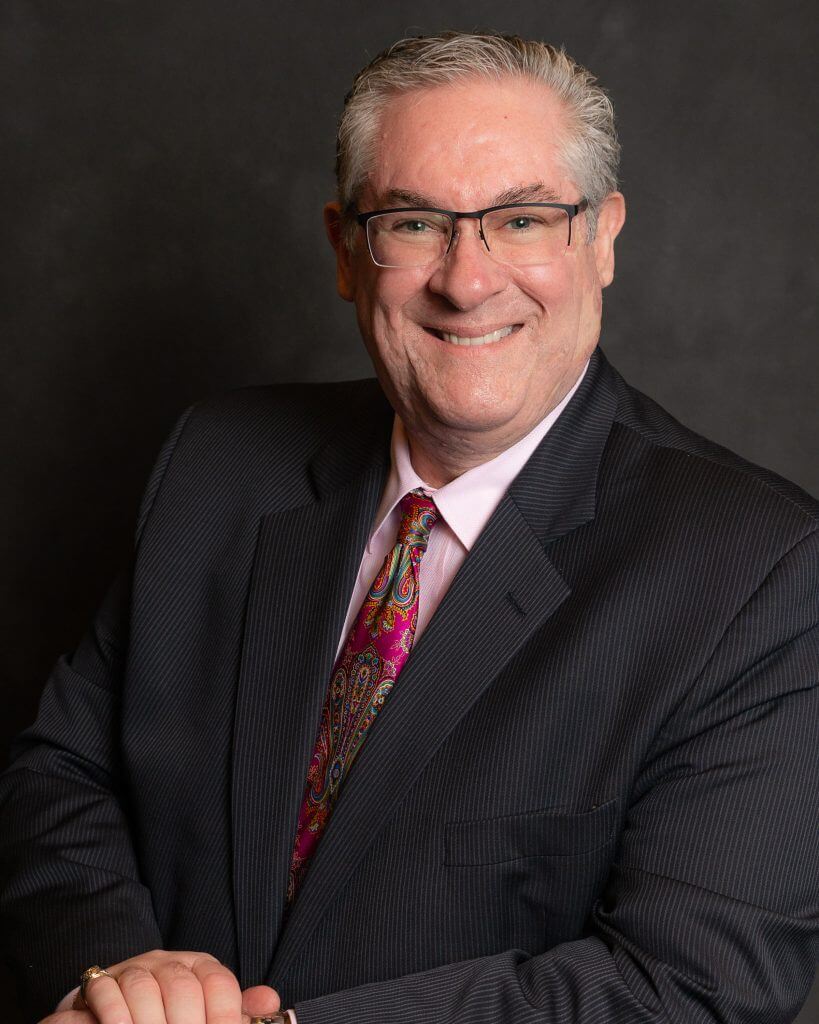Are you thinking about taking your practice to the next level? If expansion is in your future, you’ll need help navigating that complex transition. We recently spoke to Dr. Emilio Justo, founder of the Arizona Eye Institute, about growing his ophthalmology practice, his pivotal decisions around real estate and service diversification, and how he successfully maintained his company culture through a major acquisition. We uncover valuable lessons on practice growth, real estate ownership, and maintaining organizational culture amidst significant change.
Founding the Arizona Eye Institute & Cosmetic Laser Center
Dr. Emilio Justo, the founder and medical director of the Arizona Eye Institute & Cosmetic Laser Center, stands out as a visionary in the field of ophthalmology. His journey is marked by a commitment to excellence and a willingness to embrace opportunities. With more than 36 years of experience, Dr. Justo continuously evolved his practice to meet the changing needs of his patients and the healthcare landscape.
Dr. Justo began his career as a traditional general ophthalmologist, focusing on essential eye care services such as cataract surgery and treatment for glaucoma. However, he quickly recognized the potential for growth in oculoplastics, leveraging his strong residency training in this specialty. By diversifying into oculoplastics, he distinguished himself from his peers and expanded his practice’s offerings.
Within the first few years of his practice, he made a strategic decision to incorporate non-surgical cosmetic procedures into his services. He established a med spa in one of his offices, which allowed him to tap into the growing demand for aesthetic treatments. This innovative approach diversified his practice and attracted a new patient demographic.
Diversification into Cosmetic Procedures
The foray into cosmetic procedures was not just a side project but a significant component of the practice. Advanced techniques, such as CO2 laser blepharoplasty, liposuction, and endoscopic brow lifts, set the practice apart from traditional ophthalmologists. This diversification enhanced patient satisfaction and contributed to his practice’s financial stability.
As he continued to expand his expertise, Dr. Justo became known for his commitment to providing high-quality aesthetic care. This reputation helped solidify his practice’s position in the competitive healthcare market, allowing him to maintain a loyal patient base while attracting new clients seeking cosmetic enhancements.
The Importance of Real Estate Ownership
One pivotal decision was to invest in real estate. Early in his practice, he transitioned from leasing office space to purchasing a building on a busy street in Sun City, Arizona. This decision proved invaluable, as it allowed him to rent from himself rather than pay external landlords.
Owning real estate provided financial advantages, including equity growth and reduced overhead costs. Consider real estate ownership as a strategic move to enhance your financial stability. This will protect your practice from rising rental costs and position you for greater long-term success.
Financial Backing and Equipment Purchases
Throughout his career, Dr. Justo recognized the importance of securing financial backing to support his practice’s growth. He leveraged loans and mortgages to finance the purchase of essential capital equipment. However, it’s important to conduct thorough analyses before making significant purchases.
While some equipment investments yielded substantial returns, others became costly mistakes. You should approach equipment purchases cautiously and wait to see the long-term effectiveness of new technologies before committing resources. This strategic approach can prevent financial pitfalls and ensure investments align with practice goals.
The Risks of Being First in New Procedures
Being the first to adopt new procedures and technologies can attract initial patient interest, but it also carries risks. Being first does not guarantee success, as not every new procedure proves to be effective or financially viable.
As his career progressed, Dr. Justo adopted a more conservative strategy. He became comfortable with the idea of being a later adopter, allowing time for a new procedure to establish its efficacy and safety before integrating it into his practice. This shift reduced risk and allowed him to make more informed decisions that benefited his practice and patients.
What You Need to Know When Considering a Sale
The Value of Practice Assets
Understanding the value of practice assets is crucial when contemplating a sale. Practice assets encompass tangible and intangible elements that contribute to the overall worth of the business. Tangible assets include equipment, real estate, and inventory, while intangible assets encompass brand reputation, patient relationships, and proprietary procedures.
Dr. Justo’s experience highlights the significance of integrating an ambulatory surgical center (ASC) into his practice. This addition enhanced the practice’s revenue potential and made it more attractive to potential buyers, particularly private equity firms that prioritize such facilities. The presence of an ASC can significantly increase a practice’s valuation, making it essential for physicians to consider this route if feasible.
Working with Brokers and Private Equity Firms
Engaging with a broker can streamline the sale process, providing valuable insights and facilitating negotiations. Dr. Justo’s initial reluctance turned into an opportunity when he finally engaged with a broker who had a persistent interest in his practice. This relationship allowed for a thorough analysis of the practice’s value and marketability.
Private equity firms typically seek practices with established patient bases and streamlined operations. They are particularly interested in practices that can demonstrate consistent revenue streams and growth potential. Therefore, maintaining a solid operational structure and financial health is paramount for physicians considering a sale.
Transitioning Decision-Making Power
Transitioning from being the primary decision-maker to sharing authority with a larger organization can be challenging. Dr. Justo noted that the initial phase following the acquisition was particularly difficult as he adapted to the new dynamics. Recognizing the need to let go of control was essential for a smoother transition.
To facilitate this change, it can be beneficial to maintain open lines of communication with the new management. Regular meetings and discussions can help align goals and address concerns, ensuring the founder’s vision is reflected in the practice’s operations.
Maintaining Practice Culture Post-Acquisition
Preserving the practice culture after an acquisition is crucial for employee morale and patient satisfaction. Dr. Justo’s longstanding relationships with his staff played a vital role in maintaining stability during the transition. Loyalty and trust are foundational elements that can help mitigate the uncertainties that often accompany such changes.
Leadership should prioritize transparency and inclusion during the transition to foster a positive culture. Engaging employees in discussions about the future and addressing their concerns can strengthen their commitment to the practice and its mission.
Advantages of Joining a Larger Organization
Joining a larger organization can offer numerous advantages, particularly in terms of resources and support. For Dr. Justo, the most significant benefit was the reduction of administrative burdens. With a dedicated team managing day-to-day operations, he could focus more on patient care and surgical procedures.
Additionally, larger organizations often provide access to advanced technologies and training opportunities, enhancing the overall quality of care. This support can lead to improved patient outcomes and satisfaction, ultimately benefiting the practice’s reputation and growth.
Future Plans for the Practice
Looking ahead, the practice’s future seems promising. Dr. Justo is actively seeking to expand his team by adding another ophthalmologist to help utilize the ASC more effectively. This growth strategy aims to enhance service offerings and accommodate the increasing patient demand.
Moreover, exploring opportunities for additional office locations can further bolster the practice’s presence in the community. Dr. Justo aims to secure a sustainable future for the Arizona Eye Institute by continuing to invest in human and physical resources.
Integrating New Team Members
Integrating new team members into an established practice can be both exciting and challenging. The success of this integration hinges on effective communication, shared goals, and a commitment to maintaining the existing culture while welcoming new perspectives.
When considering the addition of a new ophthalmologist or staff, it is essential to establish a clear onboarding process. This process should include mentorship opportunities, training sessions, and regular feedback mechanisms to ensure new hires feel welcomed and valued from day one.
Moreover, fostering a collaborative environment is crucial. Open dialogue between existing and new team members can facilitate relationship-building and enhance teamwork. Regular team meetings and social events can help bridge gaps and create a unified practice culture.
Strategies for Successful Integration
- Mentorship Programs: Pairing new hires with experienced staff can provide guidance and support as they acclimate to the practice.
- Clear Expectations: Clearly communicate roles, responsibilities, and performance expectations to avoid confusion and ensure alignment.
- Feedback Loops: Establish regular check-ins to gather new and existing staff feedback on the integration process.
- Team Building Activities: Organize team-building exercises to foster camaraderie and strengthen relationships among team members.
Leadership and Personal Development Insights
LeadershHealthcare leaderships a unique blend of clinical expertise and interpersonal skills. As practices evolve, so too must the leadership styles that guide them. Dr. Justo emphasizes the importance of personal development in enhancing leadership capabilities.
Continuous learning through books, workshops, and mentorship can significantly influence a leader’s effectiveness. Engaging with thought leaders in the industry can provide fresh insights and inspire innovative approaches to practice management.
Key Leadership Traits
- Vision: Leaders must articulate a clear vision that inspires and motivates their team.
- Empathy: Understanding the needs and concerns of team members fosters a supportive work environment.
- Adaptability: The ability to pivot in response to changing circumstances is crucial for sustained success.
- Accountability: Leaders must hold themselves and their teams accountable to maintain high standards of care and service.
Personal Development Practices
- Set Goals: Establish personal and professional goals to provide direction and motivation.
- Seek Feedback: Regularly solicit input from peers and mentors to identify areas for improvement.
- Invest in Learning: Attend workshops, webinars, and conferences to stay updated on industry trends and best practices.
- Practice Self-Reflection: Reflect on experiences and lessons learned to foster growth.
Final Thoughts
Dr. Emilio Justo’s journey underscores the importance of adaptability and strategic planning in the evolving landscape of healthcare. As he continues to lead the Arizona Eye Institute, his commitment to growth and innovation remains steadfast.
For healthcare professionals considering similar transitions, Dr. Justo’s insights serve as a valuable roadmap. Embracing change, investing in personal development, and cultivating a positive practice culture are vital components of long-term success.
As the healthcare industry continues to evolve, leaders must remain vigilant, open to new ideas, and dedicated to the well-being of their teams and patients. The journey may be challenging, but the rewards of building a thriving practice are immeasurable.
FAQ Section
What are the benefits of owning real estate for a medical practice?
Owning real estate allows practitioners to build equity, reduce overhead costs, and maintain control over their work environment. It also protects against rising rental costs and provides a potential revenue stream through leasing unused space.
How can I ensure a smooth transition when integrating new team members?
Establish a structured onboarding process, foster open communication, and engage in team-building activities to promote collaboration and inclusivity. Regular feedback and mentorship opportunities are also essential for a successful integration.
What leadership qualities are essential in healthcare?
Key leadership qualities include vision, empathy, adaptability, and accountability. These traits help leaders effectively guide their teams and respond to the dynamic nature of the healthcare environment.
How can I continue to develop my leadership skills?
Engage in continuous learning through books, workshops, and mentorship. Set personal and professional goals, seek feedback, and practice self-reflection to identify areas for growth.
What should I consider when planning for the future of my practice?
Consider expanding your team, exploring additional office locations, and investing in advanced technologies. Regularly assess market trends and patient needs to align your practice’s growth strategy with community demands.




